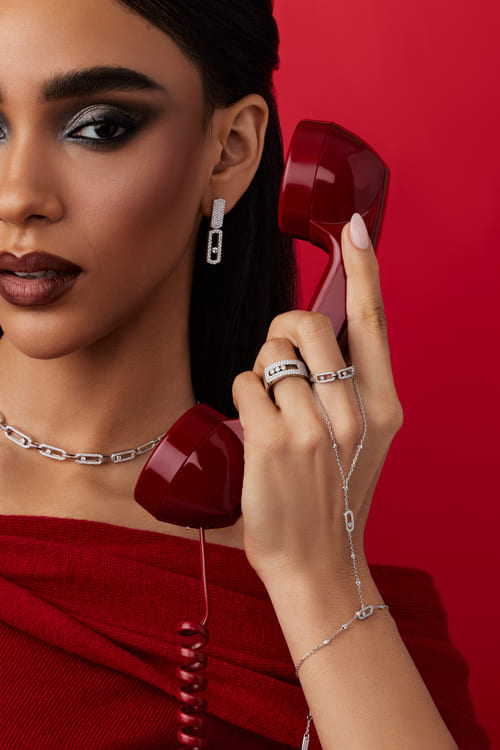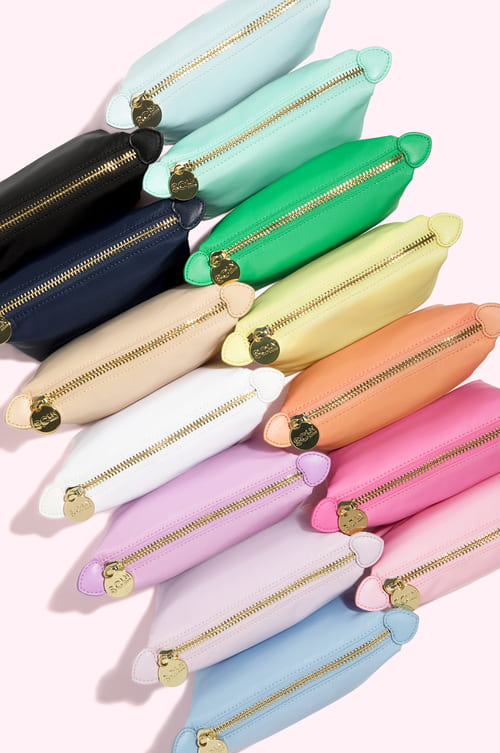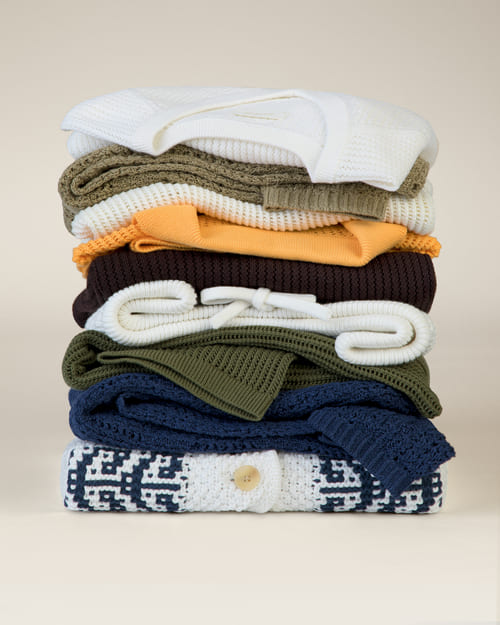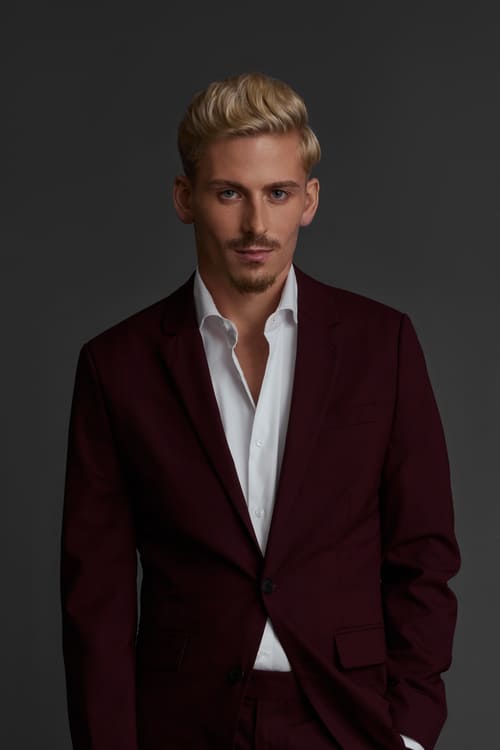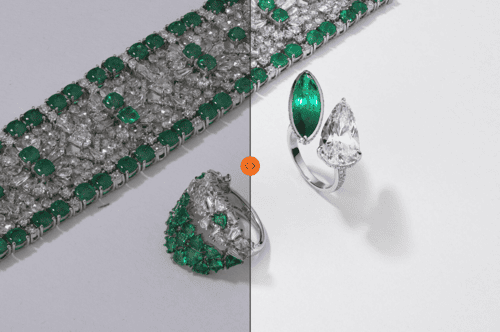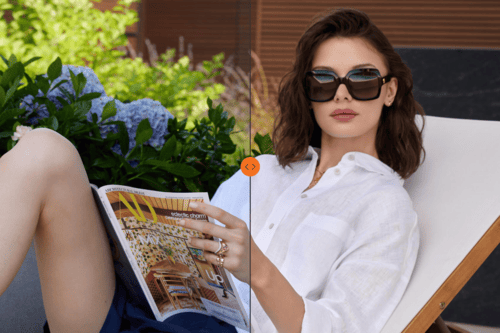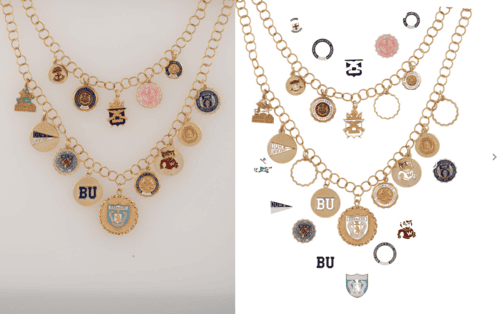Product Photography for Kidswear and Children’s Accessories Brands
Kidswear photography is trickier than it looks. Kids grow fast, parents need to shop quickly, and your photos need to make parents click "buy now" immediately instead of bouncing to the next brand.
We will go over the unique demands of photographing children's products, common pitfalls brands encounter, and actionable solutions for building a strong visual presence that translates into measurable results.

The Distinct Features of Kidswear and Children’s Accessories Photography
Kidswear Photography That Aligns with Parental Decision-Making
Parents shop differently than other consumers, looking for specific signals in product images that address their primary concerns:
- Comfort. Photography should visually communicate soft fabrics, non-restrictive designs, and wearability. Close-ups showing fabric texture and natural movement help parents imagine how garments will feel against their child's skin.
- Safety. Visual cues demonstrating secure closures, the absence of small detachable parts, and appropriate design features reassure parents. Detailed shots of rounded edges, secure stitching, and child-friendly materials build trust.
- Durability. Parents need to see that products can withstand active play and frequent washing. Photography highlighting reinforced seams, quality fastenings, and robust construction communicates long-term value.
Unlike adult fashion photography, kidswear images that appear too perfectly styled or unnaturally posed often reduce parent trust. Authentic representation showing how products look, fit, and function consistently outperforms heavily edited or artistic shots in conversion rates.
Remember: Parents aren't just making aesthetic choices, but they're making decisions about products that directly impact their child's comfort, safety, and daily experience.
How Children's Age Groups Influence Visual Style
Different developmental stages require distinct photography approaches to connect with both children's capabilities and parents' expectations. Kidswear brands that make clothing for various age groups utilise these distinct photography styles to appeal to their consumers, be it kids or parents:
Infants (0-12 months)
Brands like Petit Bateau employ soft, gentle lighting with pastel colors and minimal backgrounds. They use diffused, natural-looking light to create a dreamy atmosphere, featuring close-ups of organic cotton against the baby's skin and simple white backgrounds that emphasize comfort and safety.
This approach works because parents prioritize fabric quality and safety over style at this stage. Your brand could adopt macro photography to highlight fabric texture, use soft natural lighting, and maintain clean backgrounds to focus on material quality.



Toddlers (1-3 years)
Frugi exemplifies this stage with dynamic compositions that capture movement and tactile play, such as toddlers touching leaves or splashing in puddles. They emphasize practical features like stretch panels, magnetic closures, and reinforced knees.
This visual style succeeds because parents need durable, functional clothing that withstands active exploration. Your brand could photograph children in authentic play scenarios and include close-ups of practical design elements like easy-grip zippers.



Kids (4-7 years)
Structured activities showcase independence and versatility. Mini Boden creates narrative-driven photography with children engaged in crafting and outdoor adventures, demonstrating how the same dress works for the classroom and parties.
This resonates because parents want adaptable clothing while children express preferences. Your brand could create lifestyle scenarios showing outfit versatility and highlight how pieces transition between different settings.





Tweens (8-12 years)
Style-forward imagery acknowledging growing fashion awareness. Crewcuts features tweens in age-appropriate yet trendy settings, highlighting cool graphics and trendy colors alongside quality construction.
This works because tweens influence purchase decisions while parents maintain approval. Your brand could feature contemporary environments and showcase trend-aware details that excite young customers while reassuring parents.



Capturing the Joyful Spirit of Childhood
Authentic kidswear photography significantly outperforms posed shots, generating 34% higher social media engagement and 22% longer page dwell times. Parents instinctively detect forced expressions, making genuine moments crucial for building trust.
Successful approaches prioritize movement over static poses, showing clothing in action during running, spinning, and jumping. Creating real play scenarios—building sand castles in swimwear or doing art projects in stain-resistant clothing—provides natural contexts for authentic interaction. The most compelling images capture spontaneous moments like an excited twirl or focused concentration.
ZARA Kids leads in this approach by creating environments where genuine expressions naturally emerge. Their techniques include longer sessions with planned breaks, photographers who build rapport with children, minimal direction, and capturing 3-4 times more frames than needed to select the most authentic moments.

Authentic photography helps parents envision their own child in the products, builds confidence that items can withstand real play, creates an emotional connection, and accelerates purchasing decisions.
Core Visual Challenges in Kidswear and Accessories
In adult fashion, style often takes precedence. Children's clothing requires parents to quickly assess quality, fit, and practicality through visual cues alone. The challenge intensifies when parents cannot physically touch fabrics or gauge true-to-life colors and sizing. Leading children's brands have developed sophisticated visual strategies that address these unique parental concerns, transforming product photography from simple documentation into powerful communication tools that build trust and drive conversions.
| Material Quality and Texture. Parents judge products through visual texture cues. Burt's Bees Baby uses macro photography with soft lighting to showcase cotton softness in sleepwear. Hanna Andersson captures children mid-jump to demonstrate elastic movement in pajamas. Tea Collection employs backlighting to reveal the lightweight nature of summer dresses. | 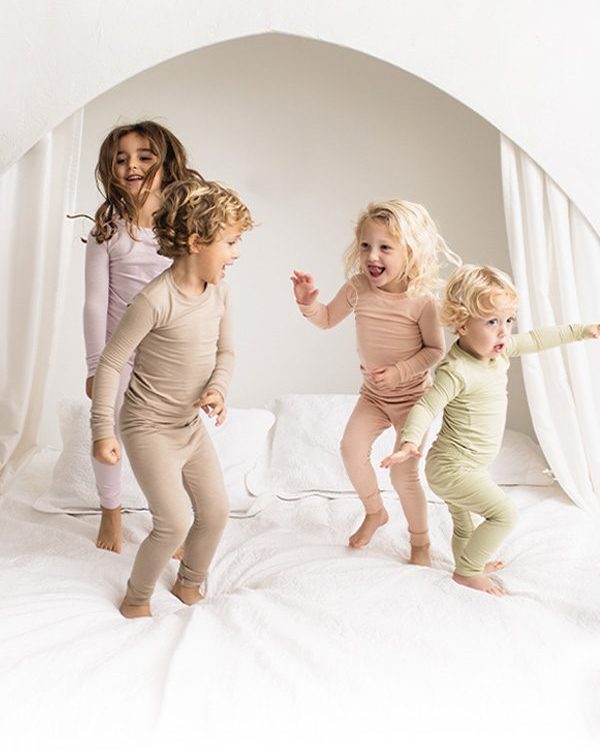 |
 | Color Accuracy. Color precision is crucial with pastels and primaries in children's fashion. Mini Rodini employs specialized color management teams for consistency. Primary built their entire strategy around color accuracy with custom fabric profiles and standardized lighting, reducing color-related returns by 32% and increasing repeat purchases by 28%. |
Material-Specific Lighting. Different fabrics require tailored approaches. The North Face Kids uses directional side lighting for fleece textures. Muddy Puddles positions soft boxes to highlight water-resistance without distracting reflections. H&M captures subtle movement to demonstrate fabric drape in lightweight cottons.

Scale and Fit Representation. Small products often appear misleadingly large in close-ups. Carter's reduced returns by 19% by including references like adult hands holding baby items. Gap Kids shows "grow-with-me" pants in both minimum and maximum settings. H&M maintains consistent camera positioning across baby accessories to create a reliable size perception.
Types of Product Photography to Consider
Children's Fashion Lifestyle Photography
Lifestyle photography displays products in real-world settings, creating emotional connections and demonstrating how items integrate into children's daily lives. This approach is worth the investment because it allows parents to visualize their own children wearing your products, tells your brand story more effectively than product-only images, and showcases how items look in motion during typical activities. Additionally, lifestyle photography differentiates your brand from competitors and typically performs better on social media than studio shots.
For maximum impact, lifestyle images work exceptionally well for website hero banners that immediately communicate your brand personality. They also generate higher engagement on social media platforms, grab attention in email marketing headers, provide cohesive storytelling in campaign materials, and inspire multiple-item purchases when featured in lookbooks.
When planning lifestyle photography sessions, it's advisable to schedule seasonal shoots that capture multiple outfits in complementary settings. Create comprehensive shot lists that include environmental scenes, interaction shots between children, and important product details. Remember to plan for different aspect ratios needed across various marketing channels to maximize the versatility of your images.

Kidswear Studio / Product Shots
Professional studio photography increases conversions by 15-30%, reduces returns, and boosts average order values. Three effective approaches serve different purposes:
Flat lay photography excels for multi-piece outfits and newborn clothing. It's cost-effective, shows outfit coordination, performs well on social media, and maintains consistent styling.
Ghost mannequin photography reveals garment structure without distractions. It creates a professional 3D representation without model costs, accurately shows shape, meets marketplace requirements, and provides a consistent appearance across sizes.
On-model studio photography demonstrates fit, movement, and scale. It helps customers visualize products for children, shows fabric drape, increases size selection confidence, and creates a cohesive brand presentation.
Marketplace Compliance Requirements
Each major marketplace has specific technical requirements that directly impact visibility and searchability:
Amazon:
- Minimum 1000×1000 pixels (preferably 2000×2000)
- Pure white background (RGB: 255,255,255)
- The product must fill 85% of the frame
- No props or models in the main image
Walmart:
- Minimum 2000×2000 pixels
- White background for main images
- Product-centered with consistent margins
- No overlays, watermarks or text
Macy's:
- Minimum 2400×2400 pixels
- Standardized crop specifications
- Specific color profile requirements
- Strict file naming conventions
For a comprehensive breakdown of marketplace requirements and opportunities beyond photography, see our detailed guide: Best Marketplaces for Your eCommerce Business Decoded.
Production Efficiency Strategies
Leading children's brands optimize their studio photography process through:
- Standardized lighting setups for consistent appearance
- Template-based post-production for uniform results
- Comprehensive shot lists that ensure all required angles
This exceptional efficiency is exemplified by Carter’s photography, which captures similar products in sequence with standardized camera positions, significantly reducing setup time while maintaining consistent product representation.

Quality Indicators in Studio Photography
The difference between amateur and professional kidswear studio photography is evident in:
- Color accuracy (especially critical for matching sets)
- Fabric texture representation
- Consistent lighting across product categories
- Clean, distraction-free editing without over-retouching
- Proper exposure of both white and dark products
These quality factors directly influence customer perception of your brand value and reliability.
Investment Planning
Professional studio photography represents a foundational business investment. Plan for:
- Base product images: circa 7 images per item (front, back, detail shots)
- Seasonal updates: Refreshed imagery aligned with major selling periods
- Marketplace-specific versions: Formatted for each platform's requirements
When budgeting, consider the lifetime revenue of each product against photography costs, recognizing that quality imagery continues generating sales throughout a product's market presence.
Detail Shots for Children's Clothing and Accessories
Strategic detail photography provides a virtual "touch and feel" experience that builds purchase confidence and reduces returns. Brands using this approach report 15-25% fewer quality-related returns, higher conversion rates, fewer customer service inquiries, and better product ratings.
Fabric texture close-ups show weave, thickness, and surface characteristics that help parents assess softness and comfort. These images demonstrate quality differences that justify price points and reassure parents about materials touching their child's skin.
Fastening mechanism shots highlight ease-of-use features for quick changes, secure closures that stay in place during play, and child-friendly design elements like easy-grip zippers or magnetic closures that children can manage independently.
Adjustable feature photography showcases grow-with-me design elements, illustrates how adjustments work, and demonstrates minimum and maximum ranges. These images help parents understand product versatility and longevity, which significantly influences purchasing decisions.
Construction quality details reassure parents about durability and safety by showing reinforced seams, stress points, finishing details that prevent skin irritation, and important safety features like secure stitching or flame-resistant properties.





Implementation Best Practices
Consistent Approach: Develop a standard set of detail shots for each product category to maintain visual consistency while ensuring comprehensive coverage of key features.
Strategic Placement: Position detail images where they'll have maximum impact - typically after the main product shots but before customers make their final decision.
Contextual Relevance: Ensure each detail shot directly addresses a potential customer concern or highlights a key selling feature.
How to Prepare for a Kidswear Shoot
Successful kidswear photography begins with thorough preparation to maximize results and ROI. Effective mood boards communicate your vision by showing desired lighting styles, complementary color palettes, posing preferences, background options, and overall mood. The best approach is to develop these collaboratively with photographers, combining your brand vision with their technical expertise.
Comprehensive shot lists ensure you capture all necessary images by detailing product-specific requirements, key features to highlight, format specifications, and intended usage for each shot. Mini Boden exemplifies best practices by creating tiered shot lists that classify images as "must-have," "important," and "if time permits," ensuring critical shots are completed despite unexpected challenges.
Practical preparation should include a detailed timeline accounting for child model breaks, product changes, styling time, and lighting adjustments. Remember that shoots with children progress differently from adult photography, so building flexibility into your schedule is essential for success.
Providing Product Information and Brand Guidelines
Thorough preparation helps photographers capture your products accurately and align with your brand identity. Share essential product specifications, including size ranges, materials, key features, and color requirements. Explain functional aspects like movement, assembly, and typical usage scenarios.
Provide clear brand guidelines covering logo placement, color palette, and typography. Define your brand's personality and aesthetic, whether playful, premium, modern, or traditional. Specify any prohibited elements that should never appear in your imagery.
Reference materials significantly improve results, so share successful past campaigns, relevant competitor examples, and inspiration images showing your desired lighting, poses, and emotional tone.
Professional photographers appreciate comprehensive information to help them deliver exactly what you need the first time.
Photoshoot Timing and Logistics
Strategic Planning and Logistics
Plan photoshoots 3-4 months ahead for seasonal collections and allow 4-6 weeks between shoot completion and product launch for editing. Coordinate with manufacturing to ensure samples are available and build in buffer time for delays.
Choose appropriate locations with weather contingency plans, and book talent 6-8 weeks in advance. Prepare detailed shot lists with product codes and specifications to ensure comprehensive coverage.
For post-production, establish clear approval workflows, set realistic editing timelines (7-10 days), and specify required file formats.
Return on Investment
Quality photography delivers returns through:
- Higher conversion rates and fewer returns
- Extended usage (2-3 seasons)
- Multi-platform application (website, social, marketplaces)
- Elevated brand perception that justifies premium pricing
Professional photography ultimately strengthens your brand positioning and improves bottom-line results.
Kidswear Brand with Photography That Connects and Converts


The kidswear and children’s accessories market is one of the most emotional and sensitive fields in eCommerce. Parents are selecting items for their most precious ones. Every visual you present must balance informative clarity with emotional resonance.
That means going beyond generic product photos. You need highly professional product shots that accurately represent quality and safety, combined with authentic lifestyle imagery that connects on a human level.
Seasoned ecommerce photographers anticipate common challenges like capturing proper scale, maintaining child engagement, and highlighting safety features, ultimately delivering images that connect emotionally with parents while effectively showcasing your products' benefits.
